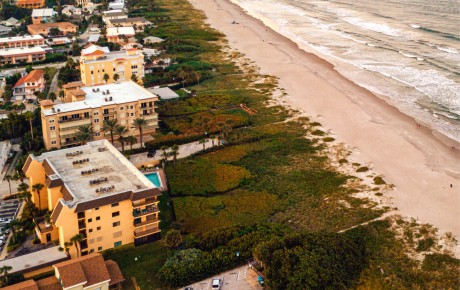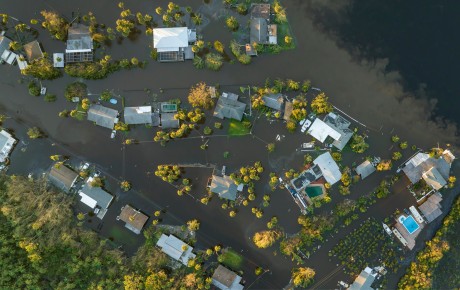
Will the price be right?
The NFIP is planning a radical overhaul of its rating approach, which could mean price rises for some homeowners.
The National Flood Insurance Program (NFIP), the US federal-backed flood insurer, has announced its first major change to its flood rating methodology since the 1970s. Known as Risk Rating 2.0, the change will fundamentally alter the NFIP’s approach to how it rates homeowners’ flood risk and could potentially raise premiums for many homeowners – although others could see reductions.
Tom King, Hiscox London Market’s Flood Underwriter believes the new approach will make the NFIP’s rating method clearer. “We’re hopeful that Risk Rating 2.0 will lead to more transparency from the NFIP in terms of its pricing and why a risk is being rated in such a way. In turn, we believe this transparency will also help to increase the take-up of flood insurance for homeowners who may not have bought cover in the past.”
We’re hopeful that Risk Rating 2.0 will lead to more transparency from the NFIP in terms of its pricing and why a risk is being rated in such a way.
Debt deluge
In the past two years, the NFIP has been granted a dozen short-term reauthorisations by Congress, with the latest due to expire on 20 September. Capitol Hill's inability to agree a longer-term deal reflects the NFIP’s parlous finances. It has more than $20 billion of debt currently sitting on its books – despite Congress already cancelling $16 billion of debt in 2017 to make room for it to pay claims from hurricanes Harvey, Irma, and Maria. Addressing this debt would appear to be a key motivation for Risk Rating 2.0, says King. “The NFIP has to do something to improve its solvency and it looks like this 2.0 programme will become part of its plan to secure a longer-term reauthorisation.”
According to the NFIP, Risk Rating 2.0 aims to provide rates that are “fair, easy to understand, and better reflect a property’s unique flood risk.” The NFIP believes the changes will make “flood insurance significantly easier for agents to price and sell policies, and in turn, help customers better understand their flood risk and the importance of flood insurance.”
King says: “It seems the NFIP is going to echo the private sector approach and what we’ve been doing with our rating mechanism. The NFIP plans to use industry best practice and technologies to hone its pricing, such as taking into account a property’s distance to the coast or a river and then modelling its flood exposure in a storm surge, river overflow, and heavy rainfall event.” It will also look at the full rebuild cost of a home, while providing credits if a range of mitigation measures have been installed, such as flood openings or the property being elevated onto posts, piles, and piers, so its pricing more accurately reflects a building’s characteristics.
The new NFIP rates will be announced in April 2020, but homeowners don’t yet know whether their prices will rise or fall.
Premiums up or down?
The new NFIP flood insurance rates will be announced in April 2020 and will go into effect for homeowners for renewals and new business from 1 October 2020, but homeowners don’t yet know whether their prices will rise or fall. “We still have this year’s hurricane season to navigate before the details of the new rates are released, so the specifics are still unknown. They’re likely to be subject to a lot of scrutiny and change,” says King. “The NFIP hasn’t said what percentage of policyholders it expects will pay more or how many will pay less, but the bottom line is customers will get a price that is more reflective of their actual risk. There will be increased granularity in pricing and reduced subsidisation across the programme. So, for example, an A-zone property in a coastal state will not be the same price as an A-zone house in an inland state.”
The new NFIP rates might become more appealing to lower-risk properties exposed to less frequent floods, which will encourage more homeowners to take out flood insurance, suggests King.
What might this changed rating methodology do for the wider flood insurance market? King thinks it could have a positive effect. “We see this move as being positive for flood insurance in general. The NFIP will have a more actuarially-modelled pricing method, which means homeowners will be able to understand their NFIP price better according to their genuine flood exposure. If overall take-up rates increase, it should also drive more business our way. There will be gaps where we believe we will be able to come in more competitively than the NFIP.”
Hiscox’s FloodPlus has no need for an elevation certificate, no wait period for inception of cover, full values, and loss of use – it’s a broader product which sets us apart from the NFIP
Broader forms, higher limits
One of the private flood insurance market’s advantages is the broader coverage and higher limits it offers and it is not yet known how the NFIP’s 2.0 overhaul will compete in these areas. “Hiscox’s FloodPlus has no need for an elevation certificate, no wait period for inception of cover, full values, and loss of use – it’s a broader product which sets us apart from the NFIP,” says King. That said, all eyes will be trained on the April 2020 announcement to see how the rating environment will shift. “We will then be able then to refine our rates, update our models and be in a position to react positively where necessary,” concludes King.




